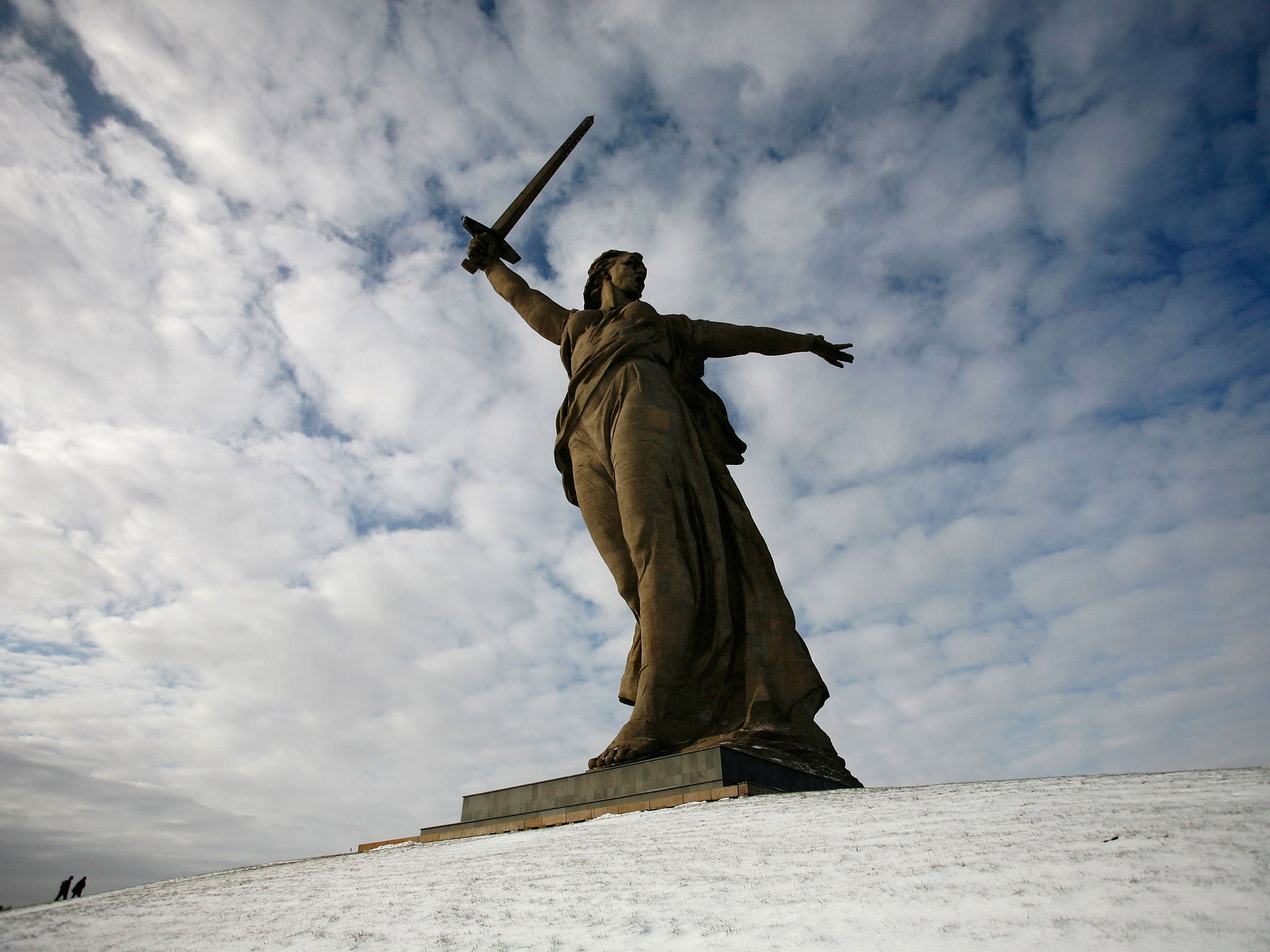From Virginia to Volgograd, our national myths need to be understood rather than mocked
The re-re-naming of Stalingrad and Spielberg's latest film Lincoln are both examples of how we revise our national history to suit the needs of the current times


Your support helps us to tell the story
From reproductive rights to climate change to Big Tech, The Independent is on the ground when the story is developing. Whether it's investigating the financials of Elon Musk's pro-Trump PAC or producing our latest documentary, 'The A Word', which shines a light on the American women fighting for reproductive rights, we know how important it is to parse out the facts from the messaging.
At such a critical moment in US history, we need reporters on the ground. Your donation allows us to keep sending journalists to speak to both sides of the story.
The Independent is trusted by Americans across the entire political spectrum. And unlike many other quality news outlets, we choose not to lock Americans out of our reporting and analysis with paywalls. We believe quality journalism should be available to everyone, paid for by those who can afford it.
Your support makes all the difference.In common with quite a few British Russianists of my generation, I spent a year at the University of Voronezh in the days when Russia was part of the Soviet Union and Leonid Brezhnev ruled the Kremlin. And two phrases are stamped on my memory from those days because they were spoken so often. Voronezh was the “last front before Stalingrad” and “almost completely destroyed in the war”. In one respect, these were offered by way of excuses for the ugly, anonymous blocks that had replaced much of the old town. Far more, though, they were expressions of pride and identity.
To rank second to Stalingrad, which had shown such fortitude and sacrificed so much to force the German retreat, counted for Voronezh as an honour. Stalin may already have been relegated from hero to villain (and Stalingrad renamed Volgograd), but the battle kept its name and its revered status as the turning point of what Russians call the Great Patriotic War. That was also when Russians were permitted to think of themselves as Russians again, after 20 years in which national identity was suppressed.
Polishing history
Which is why, when Russia commemorated the 70th anniversary of the victory at Stalingrad last week and the possibility was broached of Volgograd assuming its previous name, this had nothing whatever to do with any supposed nostalgia for the Soviet Union or communism or even Stalin. It had to do with filling in and polishing a part of history which encourages patriotism and promotes a positive national myth.
Russia’s difficulty, after the collapse of communism, was to come up with a new version of the past. This is what new textbooks, new histories, and a clutch of new films have aimed to do since Vladimir Putin first became President. The victory at Stalingrad – in a more nuanced account than simplistic Soviet triumphalism – is central to establishing the new mythology. Banned until 1988, Life and Fate, Vitaly Grossman’s epic novel, is part of the same process. Combining fierce condemnation of Stalinism with graphic scenes of battle, and unflinching faith in ordinary human goodness, it set the tone for a post-Soviet Russian war mythology when it was serialised on Russian television last year.
It was no more than coincidence, of course, but a telling one, that the historical footage from Stalingrad and news reports of the commemorations were on our screens and in our newspapers just as Steven Spielberg’s epic Lincoln was opening in British cinemas. For Lincoln is not just a sweeping docudrama, with 12 Oscar nominations, and a personal triumph for Daniel Day-Lewis. It also fosters part of a national myth – the one that allows the United States to see itself as the land that fought a war to abolish slavery, rather than the one that fought to preserve it. As ever, history is written by the victors.
But the film, and the revisiting of the American Civil War that it entails – a conflict that cost as many lives as the battle of Stalingrad – is as much a product of its time as the revision of history that is going on in Russia. It is hard to imagine Spielberg, for instance, setting out to direct an epic about the person and presidency of Abraham Lincoln without Barack Obama’s inspirational 2008 presidential campaign.
Spielberg’s wartime president, while none too fussy about how he garners the necessary congressional support to abolish slavery and none too honest about a peace offer from the Confederacy that might pre-empt the crucial vote, is also presented as deeply moral, indeed saintly. He commits minor sins only – or so it seems – in order to secure the greater good. This is father-of-the-nation stuff. It is an affirmation of the United States as it would like to be seen, but in practice still aspires to be: the guarantor of equal rights before the law, if not actual equality, for all – and, of course, by definition, colour-blind.
To my mind, the black characters are the least successful – evidence, perhaps, in their shallowness and stereotyping, that the US still has some way to go. But America’s Lincoln of 2013, in the same way as Russia’s 2013 Stalingrad, serves as a reminder for their respective populations of who did what, how much sacrifice was involved, and who was vindicated by history – at least as seen from the perspective of now. Both commemorations adapt and enhance the national mythology.
Varnished truth
It hardly needs to be said that this is a simpler proposition for winners than it is for losers. Today’s Russians can view themselves as winners through the prism of Stalingrad, their Great Patriotic War and their emergence from communism as a proud nation state. What else happened between 1917 and 1991 is far more problematical. Something similar could be said of this hagiographic depiction of Lincoln, which omits the social legacy of slavery.
Britain’s dominant myth remains that of the Second World War, with its selective recall of the Blitz, Dunkirk (actually a major retreat) and social solidarity. Defeats, such as the humiliation at Singapore, are forgotten. Without the protection of this myth, though, we might have even more hang-ups than we do about the coming centenary of the First World War and the debate about what to do with the remains of Richard III – from stuffing him back into the car park to a state funeral at Westminster Abbey – might have aroused real acrimony, rather than wry amusement.
National mythology, though, should be recognised for what it is – a varnished part of the truth. And we victors should perhaps be more indulgent towards those who have had to apply more ingenuity to identifying their glory days. For post-war France, the return of Charles De Gaulle took on a mythical quality, as did the economic miracle for Germany. But France still looks to 1789 for its most potent national myth, while united Germany is starting to look back to Bismarck, and salvaging some historical dignity is what the pilgrimages to Tokyo’s Yasukuni shrine are really about.
So long as they do not get out of hand, such national myths are mostly a positive force. People need to feel collectively good about themselves. But we should be wary of treating our own myths as the truth, while dismissing other people’s as self-delusion. In the matter of looking on the bright side, we all share a bit of blame.
Join our commenting forum
Join thought-provoking conversations, follow other Independent readers and see their replies
Comments